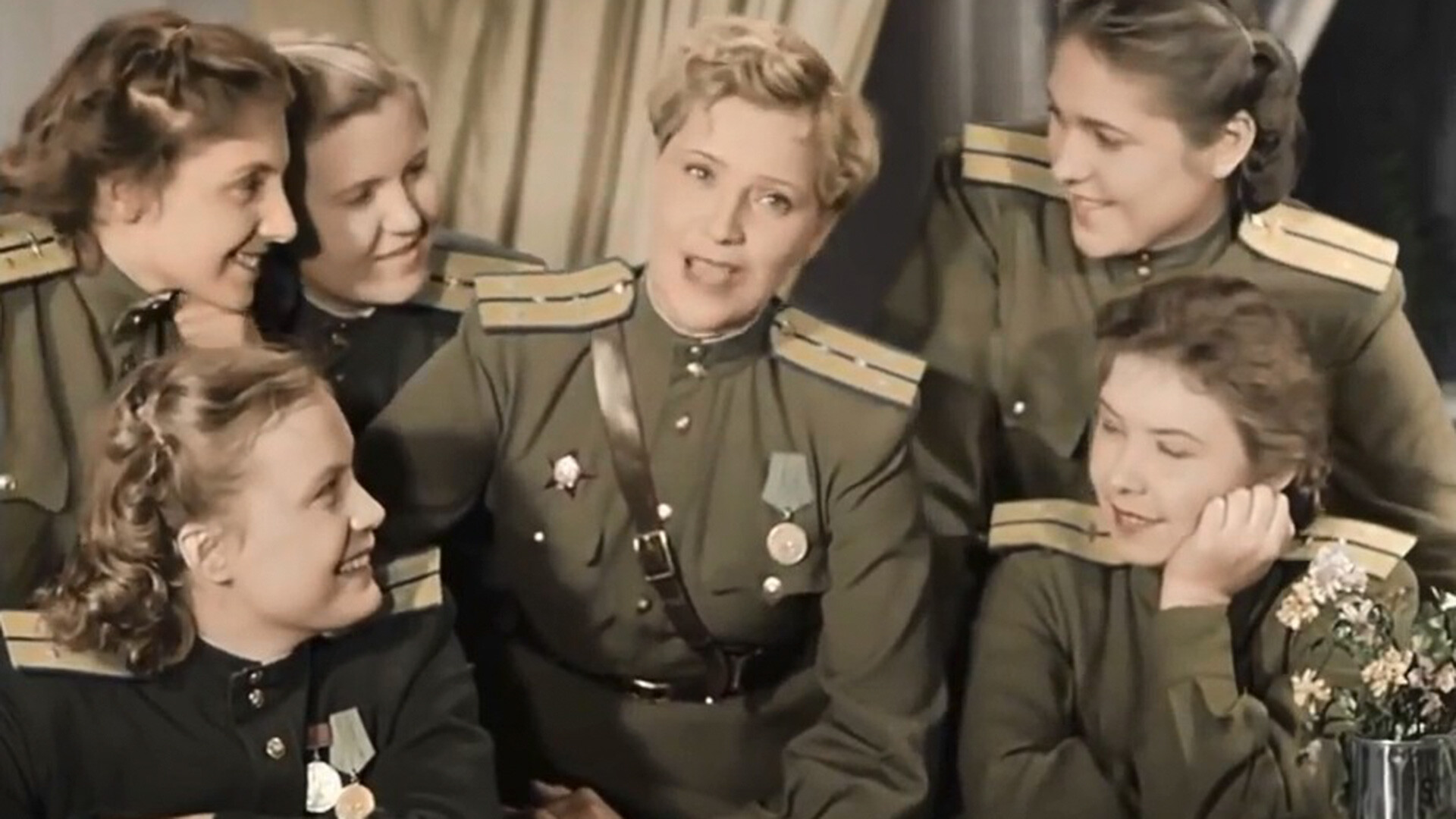
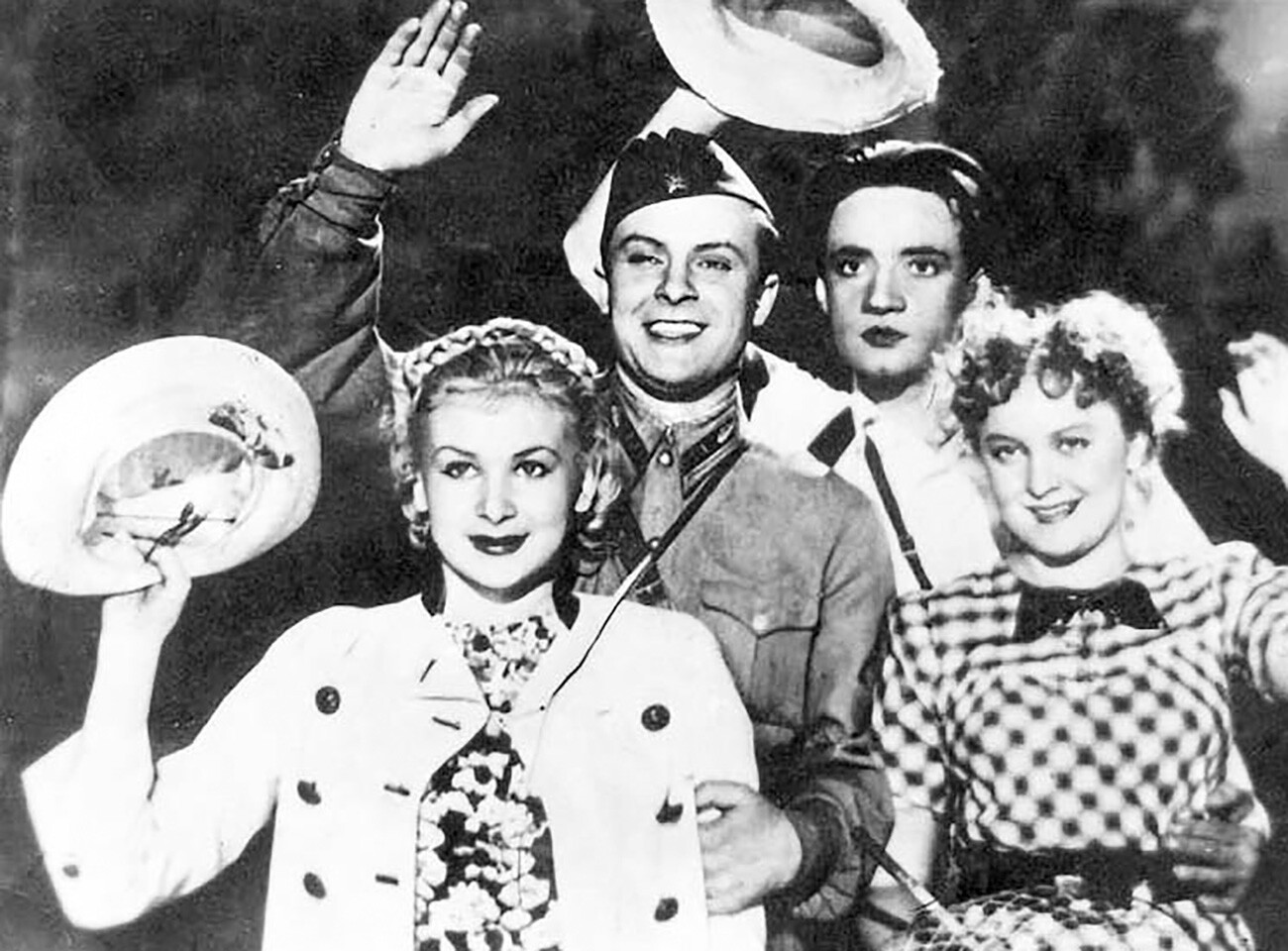
The plot of this light musical comedy revolves around a stern senior lecturer in mathematics named Galina; her sister, the frivolous student Shurochka; the dashing military man Pyotr; and the shy biologist Gleb. Time and again, the characters end up in funny and ridiculous situations, but, in the end, each of them finds happiness.
The authorities intensely disliked the movie for its “detachment from reality”. They only allowed it to be shown to the general public in 1944, when the country badly needed as many cheerful movies as possible.
For their part, the audiences were of a different opinion. ‘Four Hearts’ still remains on the list of all-time favorite Soviet comedies.
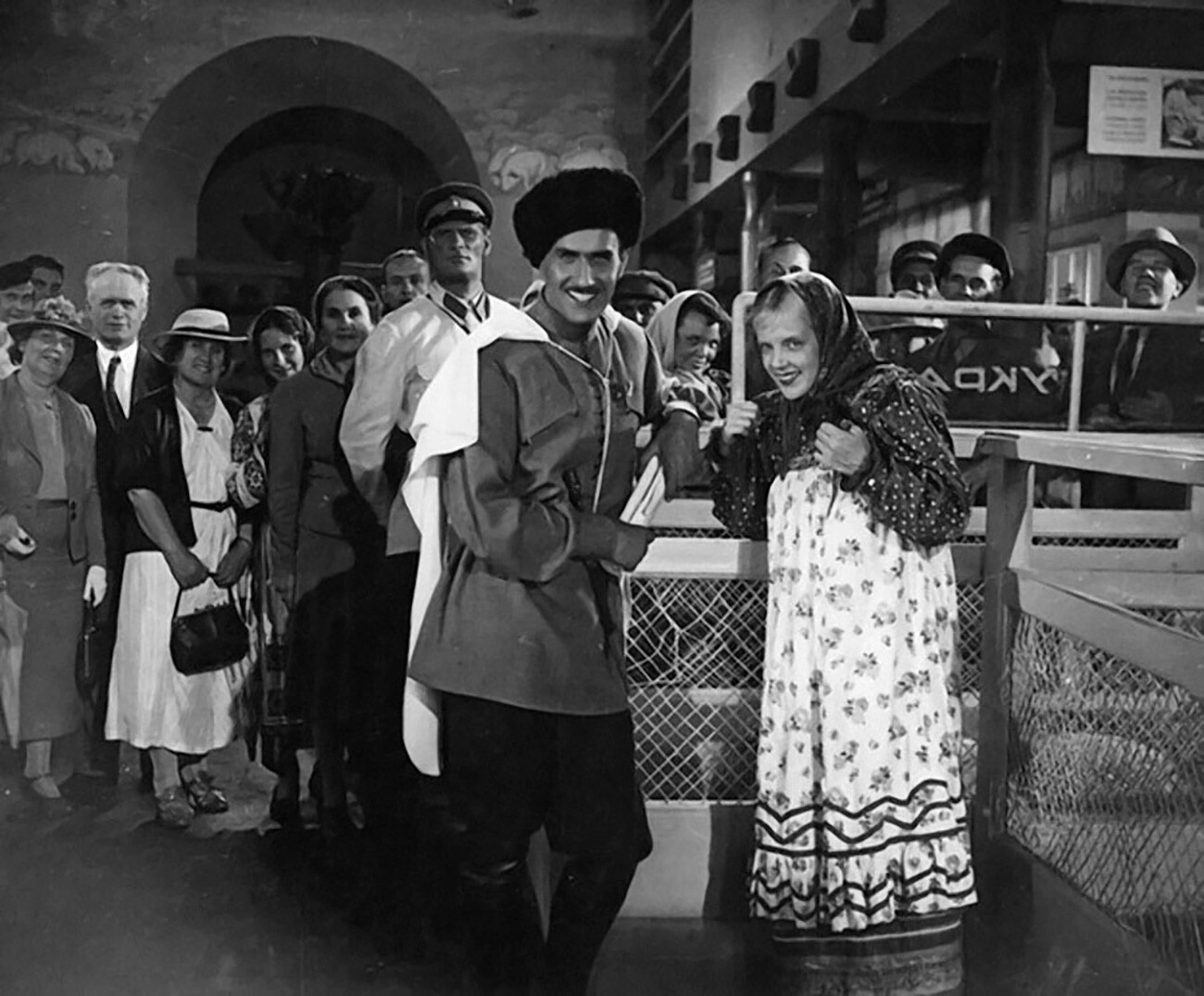
One of the gems of Soviet cinematography of the 1940s, the movie tells the love story of a shepherd named Musaib from Dagestan and Glasha, a swineherd from a collective farm in Vologda Region, who meet at an agricultural exhibition in Moscow.
Because of war breaking out on June 22, 1941, the movie might have never seen the light of day, since all the male actors were mobilized to the front. It was only on Stalin’s personal orders that they were soon returned to the set.
The movie was released worldwide in 1944. In the U.S., however, it was released as ‘They Met in Moscow’.
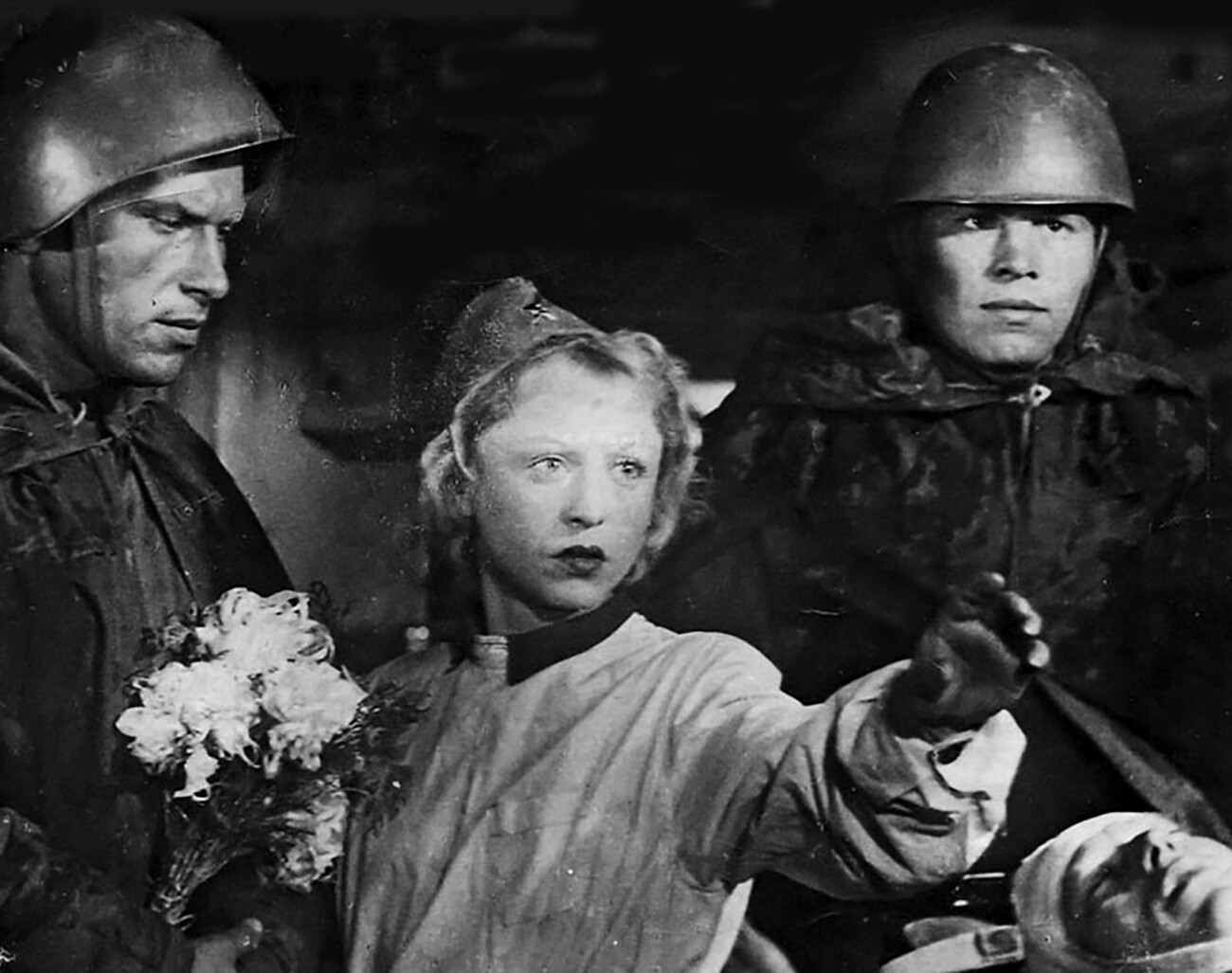
The movie, filmed during the Soviet cinema industry’s evacuation to Central Asia, tells the story of the strong friendship between two Red Army soldiers defending Leningrad against German forces. The song ‘Dark is the Night’ was specially written for the movie. Performed by Mark Bernes, it became a massive hit in the USSR.
This is what director Leonind Lukov said about his creation: “The main thing about the movie ‘Two Soldiers’ is not the plot or the external circumstances, but people at war. Everything is important there: How they fight, how they miss home, how they love a wonderful woman and dream about the future… We wanted to hear the beat of the ordinary human heart amid the howl of mortars and explosion of shells and to eavesdrop on the soldiers’ thoughts. We wanted to speak from the screen in the language of ordinary people, to sing their songs and to show the lofty and honest sentiment of the Soviet patriot that is leading us to our immortal victory over the enemy.”
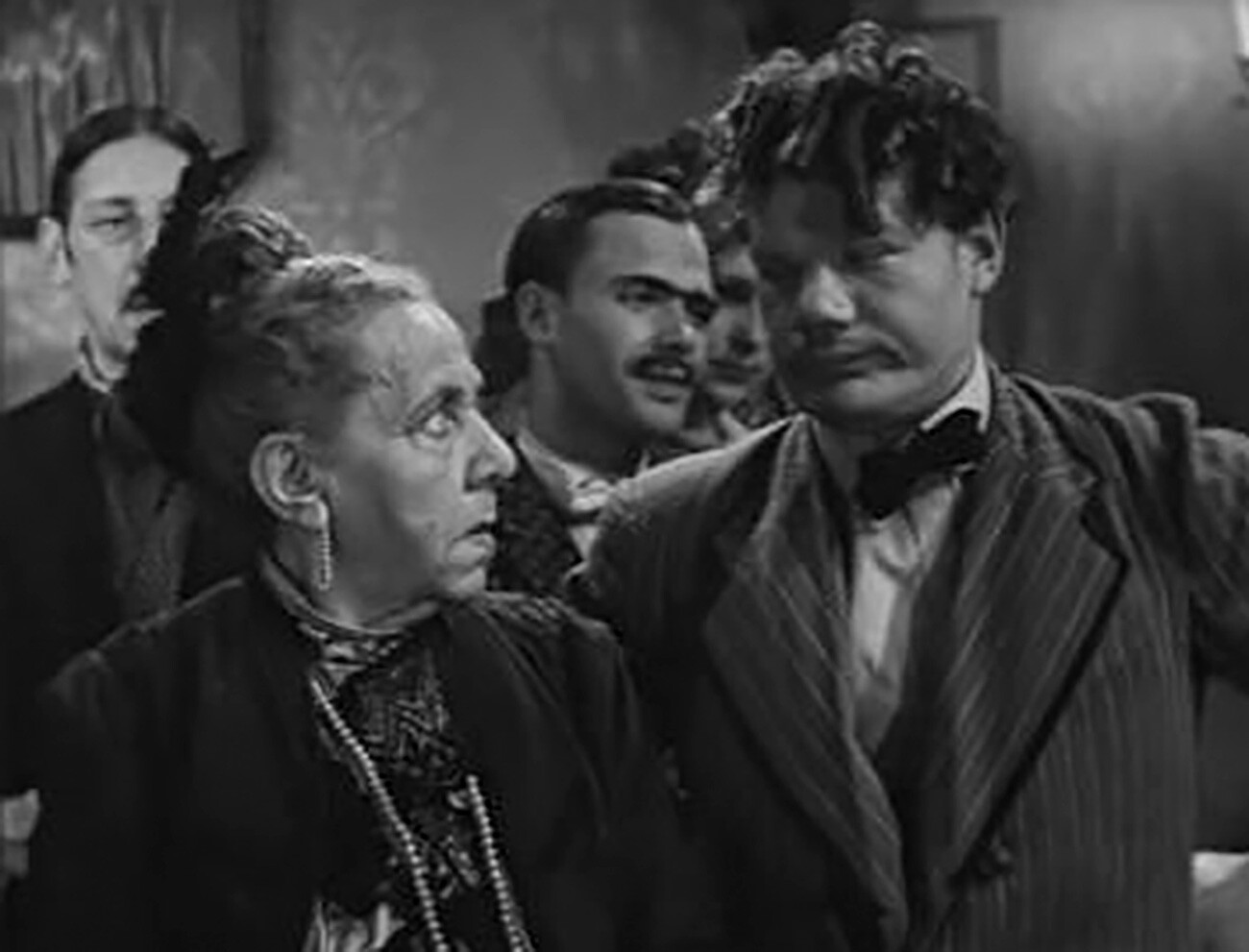
Made in 1944, the movie was timed to coincide with the 40th anniversary of Anton Chekhov’s death. Based on several works by the classic author, it exposes the mores of the middle class of pre-revolutionary Russia. ‘The Wedding’ is replete with a whole array of vividly distinctive characters brilliantly played by Soviet actors.
Their selfless approach to filming was best demonstrated by actor Mikhail Pugovkin. In one scene, the actor, who had been discharged from the army because of injury a short time before, danced so vigorously that the stitches on his leg came apart and his boot filled with blood.
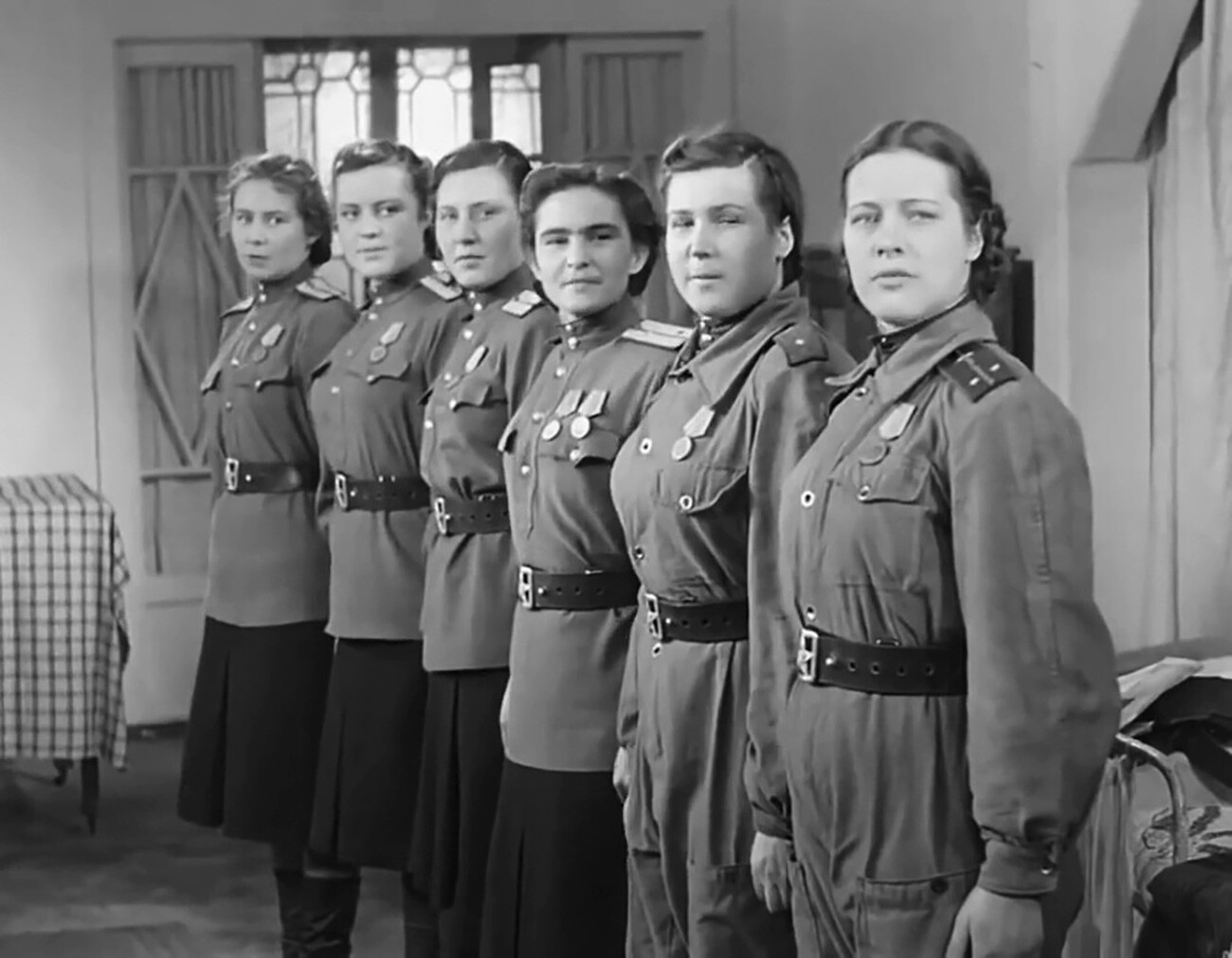
After getting injured, the movie’s hero, Major Vasily Bulochkin, has to switch from his high-speed fighter plane to a light U-2 night bomber. Moreover, he is assigned to command a whole squadron of similar “heavenly slugs” piloted entirely by women.
The movie, which was shot immediately after the end of the war, used real warplanes and pilots back from the front acted as consultants and stunt doubles. Stalin branded the comedy “devoid of ideas and vacuous”, but it came to be much loved by the Soviet public at large.
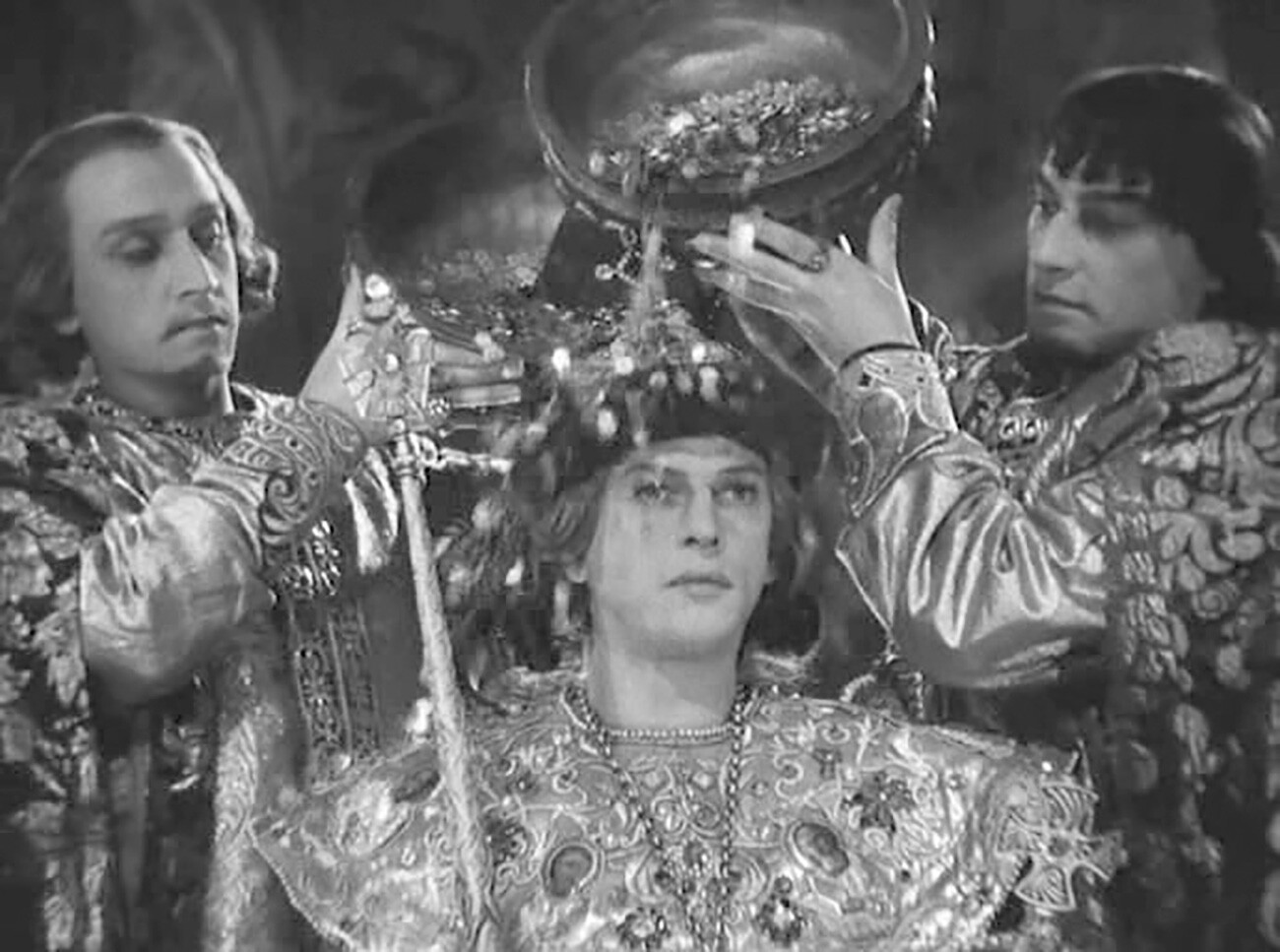
The final work of celebrated Soviet director Sergei Eisenstein, the movie recounts the life of the first crowned Tsar of All Russia Ivan IV (Ivan the Terrible). It consists of two parts. The first, which narrates the autocrat’s youth and early rule, came to the screen in 1945 and was awarded the Stalin Prize.
The second part, which tells of the tsar’s suppression of the boyar opposition and his brutal treatment of dissenters, intensely displeased the ‘Father of Nations’. Seeing parallels with his own struggle for power in the country, he rejected the movie. It was only shown to a wider public in 1958, several years after the Soviet Leader’s death.
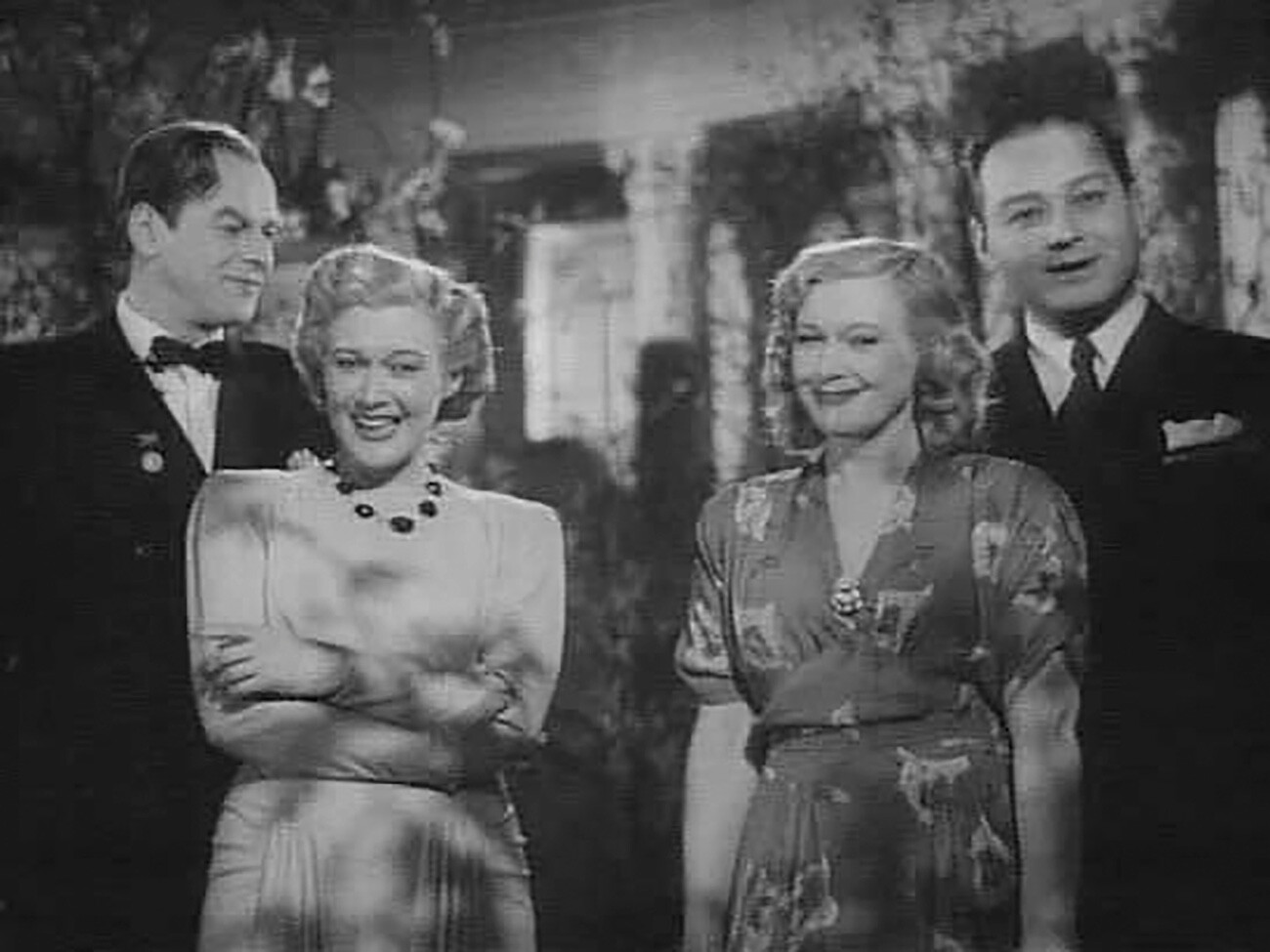
The heroine of ‘Springtime’, a young operetta actress by the name of Vera Shatrova, is to shoot her first movie in the role of Irina Nikitina, a distinguished scientist who heads the Institute of the Sun. Because Vera is the spitting image of her heroine, the two women constantly find themselves in improbable situations.
Both of the leading female roles in the movie were played by Soviet legend Lyubov Orlova. Because Soviet cinema was, at the time, none too conversant with special effects, the technicians had their work cut out to “double up” the actress in the same scene. In 1947, ‘Springtime’ was honored at the Venice International Film Festival for its original storyline and direction.
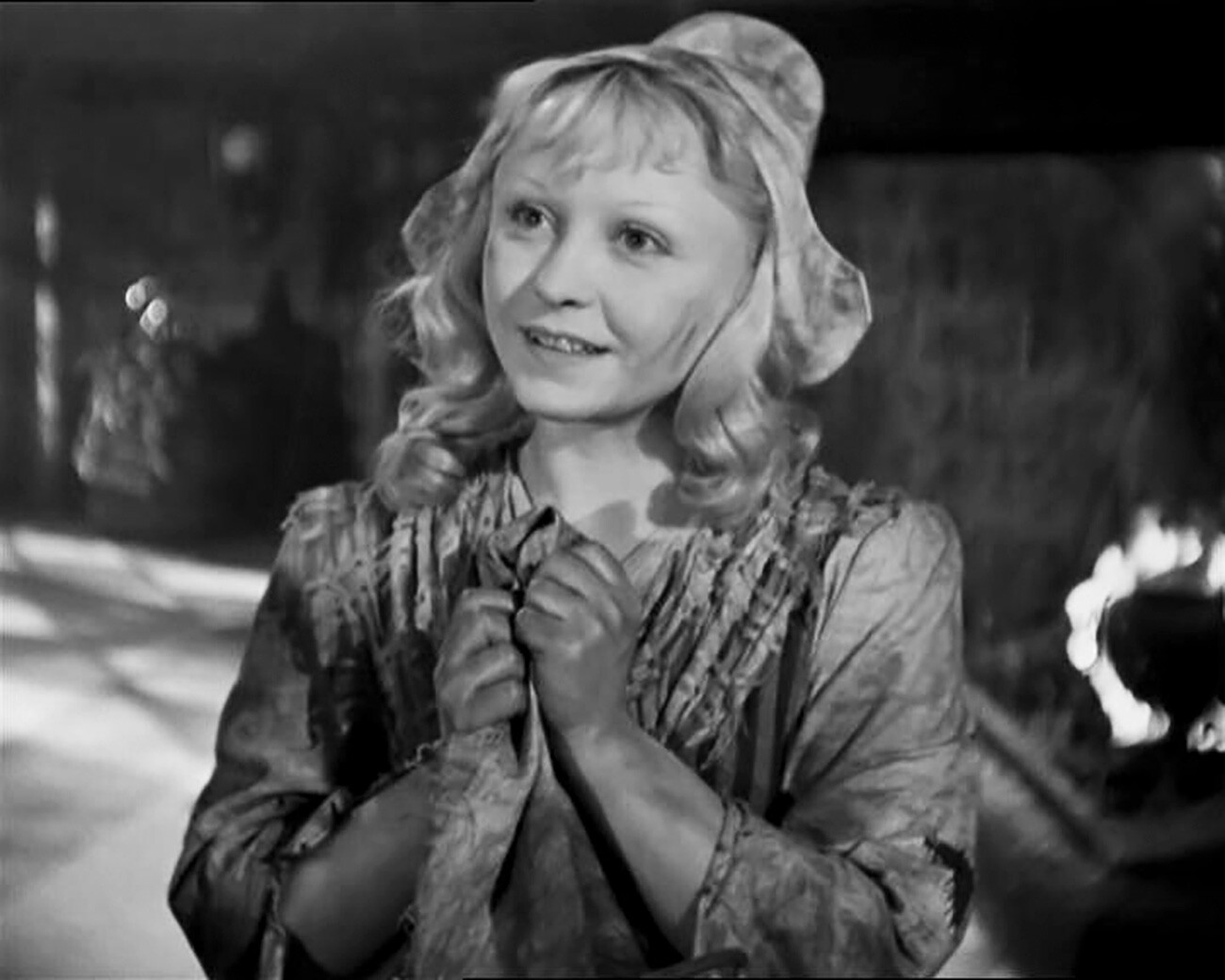
This Soviet movie, based on the eponymous tale by French writer Charles Perrault, tells the story of a modest and hard-working young girl who is treated cruelly by her wicked stepmother and step-sisters. In the end, justice triumphs and a real prince falls in love with Cinderella.
The lead role was played by Soviet actress of Polish ancestry Yanina Zhejmo, who was just 147 centimeters tall. The actress was already 37 and, to look younger, she was only filmed in the evenings as in the morning, in her own phrase, her face was “not right”.
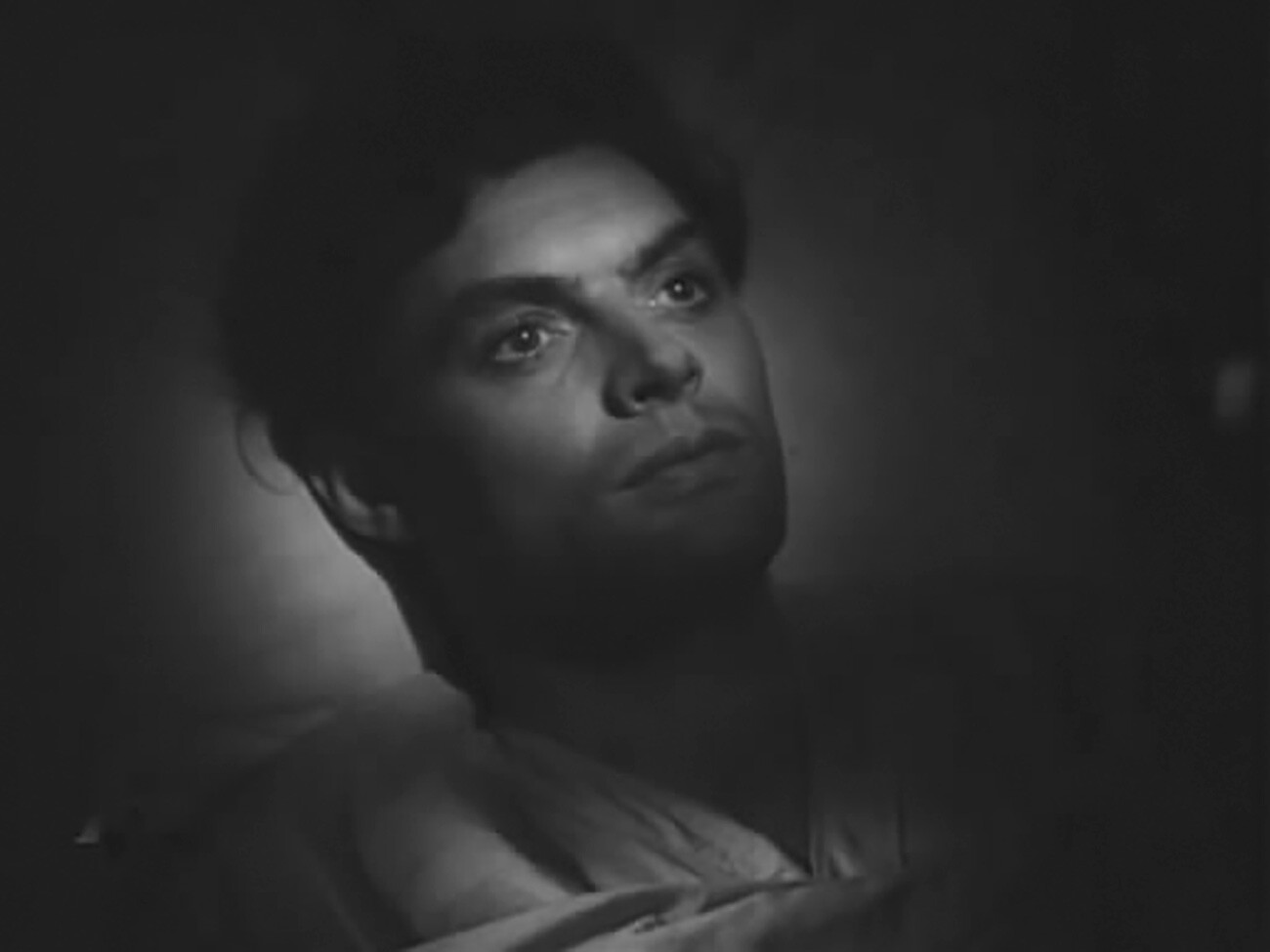
The movie tells the story of pilot Aleksey Meresyev who was shot down in a dogfight at the end of March 1942, after which it took him 18 days to get back to his own lines through a snow-covered forest. Although he survived, he had lost the soles of his feet and his legs had to be partly amputated because of frost-bite. The courageous pilot was unwilling to abandon the skies, however, and started to do what he could to get back behind the controls of a fighter plane.
‘The Story of a Real Man’ is based on the true story of Hero of the Soviet Union Aleksey Maresyev (one letter in the surname distinguishes the real-life Maresyev from the character in the movie). After all he had been through, Maresyev succeeded in getting back to flying and even managed to score seven aerial victories.

This lively and colorful musical comedy, released in February 1950, describes the socialist competition between two collective farms in the south of the USSR. The plot twist is that the chairman and chairwoman of the two collective farms - Gordei Voron and Galina Peresvetova - are intensely attracted to each other.
The movie was shot in the difficult post-war period, when food was in short supply, but the makers of the movie attempted to convey a sense of optimism and faith in the future to audiences by means of the on-screen depiction of prosperity and abundance. Stalin liked this approach: "Things aren't too bad with our agriculture after all."
On the other hand, Nikita Khrushchev, who succeeded him in office, condemned 'The Cossacks of the Kuban' for varnishing reality, and the movie was shelved and ended up gathering dust for more than 10 years.
If using any of Russia Beyond's content, partly or in full, always provide an active hyperlink to the original material.
Subscribe
to our newsletter!
Get the week's best stories straight to your inbox